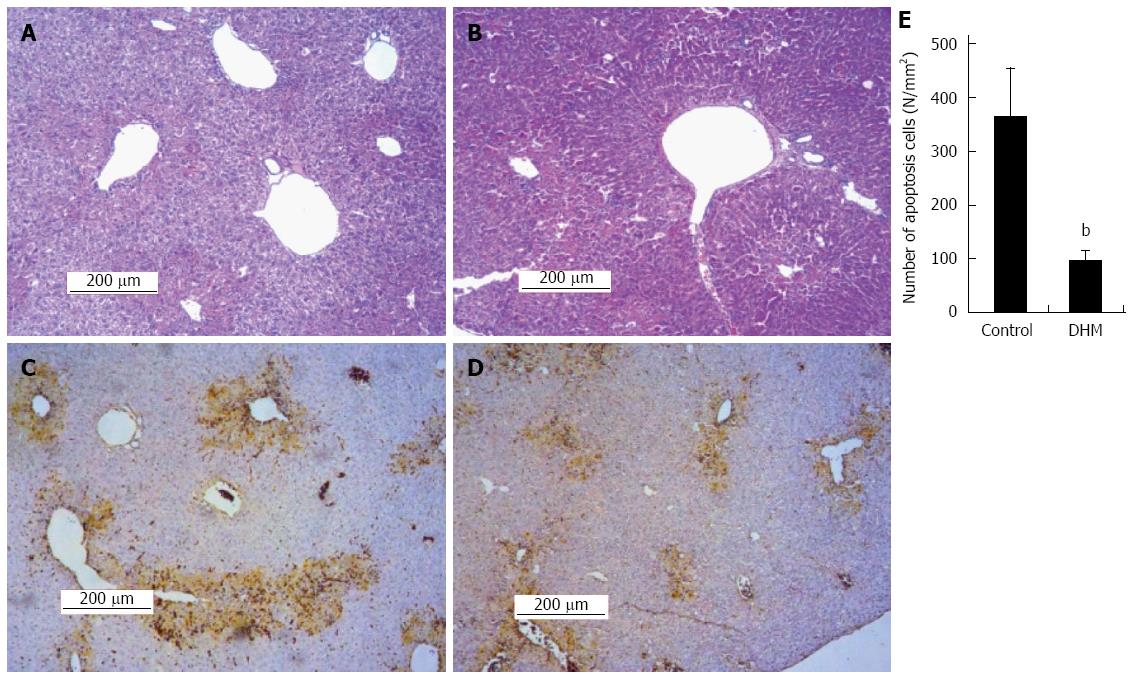Copyright
©The Author(s) 2015.
World J Gastroenterol. May 14, 2015; 21(18): 5473-5481
Published online May 14, 2015. doi: 10.3748/wjg.v21.i18.5473
Published online May 14, 2015. doi: 10.3748/wjg.v21.i18.5473
Figure 3 Dihydromyricetin reduces necrosis and inhibits apoptosis of hepatocytes in mice.
A: Representative liver section of the control group was stained with hematoxylin and eosin (HE) on day 2 after CCl4 injection, which shows partial necrosis with clusters of inflammatory cells around the central vein; B: Representative HE stained liver section of DHM administered mice on day 2 after CCl4 injection, which demonstrates decreased inflammatory cells and histological recovery with only inconspicuous necrosis still remaining around the central vein. In the TUNEL assay earthy yellow cells indicate apoptotic cells; C: The control group; D: Dihydromyricetin (DHM) treated group; E: The numbers of apoptotic cells. At least six 12 mm2 tissue sections were counted for each mouse. Values represent mean ± SE (n = 6), bP < 0.01 vs control.
-
Citation: Xie J, Liu J, Chen TM, Lan Q, Zhang QY, Liu B, Dai D, Zhang WD, Hu LP, Zhu RZ. Dihydromyricetin alleviates carbon tetrachloride-induced acute liver injury
via JNK-dependent mechanism in mice. World J Gastroenterol 2015; 21(18): 5473-5481 - URL: https://www.wjgnet.com/1007-9327/full/v21/i18/5473.htm
- DOI: https://dx.doi.org/10.3748/wjg.v21.i18.5473









